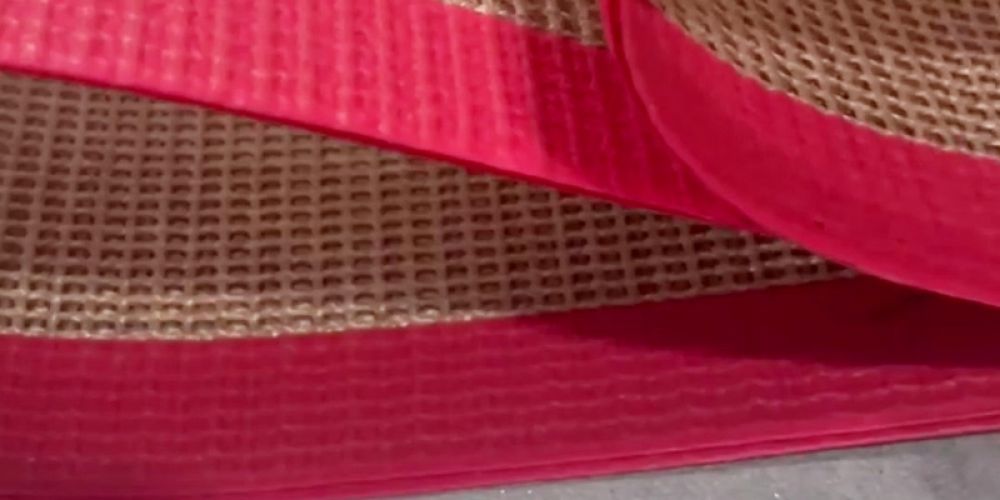
When heat-sealing the edge of a Teflon conveyor belt, the following matters need to be noted to ensure the quality of the edge and safe operation:
1. Material quality: Ensure that the quality of the Teflon conveyor belt and the edge material is good, without damage, stains, impurities, etc.
2. Size matching: The width and thickness of the edge material should match the conveyor belt to ensure the flatness and strength after heat sealing.
3. Cleanliness: Before heat sealing, be sure to clean the edge of the conveyor belt and the edge material to remove impurities such as oil, dust, etc. to avoid affecting the heat sealing effect.
1. Temperature control: According to the melting point of the Teflon material and the heat sealing requirements, accurately set the preheating temperature and heat sealing temperature of the heat sealing machine. Avoid excessively high temperatures that cause the material to burn or excessively low temperatures that cause poor heat sealing.
2. Pressure adjustment: According to the thickness of the conveyor belt and the edge material, adjust the pressing force of the heat sealing machine. Ensure that the pressure is moderate, which can promote the fusion of the materials without crushing the materials.
3. Heating area: Adjust the width of the heating area of the heat sealer to match the width of the conveyor belt and the edge material.
1. Alignment and fixation: Before heat sealing, ensure that the edge material is aligned and fixed with the edge of the conveyor belt to avoid movement or misalignment during the heat sealing process.
2. Heat sealing speed: Control the heat sealing speed to ensure that the materials are fully fused in the heating area. Avoid poor heat sealing due to too fast speed or burning of the materials due to too slow speed.
3. Observation and adjustment: During the heat sealing process, closely observe the changes in the heat sealing part and adjust the temperature, pressure and other parameters in time to ensure the quality of heat sealing.
1. Natural cooling: After the heat sealing is completed, let the conveyor belt and edge material cool naturally at room temperature. Avoid rapid cooling that will increase the internal stress of the material and affect the edge strength.
2. Curing time: Ensure that the heat sealing part is fully cured to improve the strength and durability of the edge. The curing time depends on the type of material and the heat sealing conditions.
1. Personal Protection: During the heat sealing process, wear appropriate personal protective equipment, such as gloves, goggles, etc., to prevent burns or other injuries.
2. Equipment Safety: Ensure that the safety protection devices of the heat sealing equipment are intact and effective to avoid accidents. Regularly check the wires, plugs and other components of the equipment to ensure that they are safe and reliable.
3. Operation Specifications: Follow the operating procedures and safety guidelines of the heat sealing machine to avoid illegal operations that may cause equipment damage or personal injury.
1. Quality Inspection: Perform a quality inspection on the conveyor belt after heat sealing to ensure that the edge is flat, free of bubbles, cracks and other defects.
2. Trimming: If necessary, trim the edge, such as removing excess edge materials, grinding and smoothing, etc., to improve the appearance and durability of the conveyor belt. When heat sealing the Teflon conveyor belt, you need to pay attention to material preparation, equipment settings, operation process, cooling and curing, safety protection, quality inspection and trimming. Following these precautions can ensure the quality of heat sealing and operational safety.